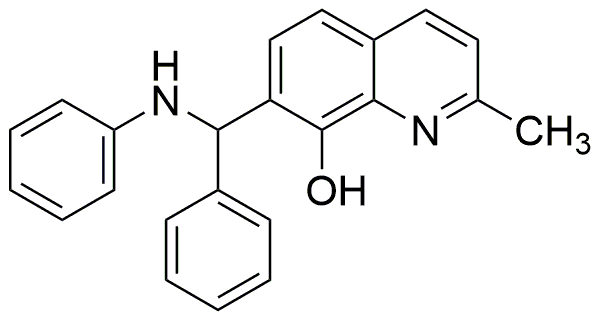NSC 66811 is widely utilized in research focused on:
- Anticancer Research: This compound has shown potential in targeting specific cancer cell lines, making it a valuable candidate for developing new cancer therapies.
- Pharmaceutical Development: Its unique structure allows for modifications that can enhance drug efficacy, particularly in creating novel treatments for various diseases.
- Biochemical Studies: Researchers use NSC 66811 to study enzyme interactions and metabolic pathways, providing insights into cellular processes and disease mechanisms.
- Material Science: The compound can be incorporated into polymers and coatings, improving their properties such as durability and resistance to environmental factors.
- Diagnostic Applications: Its properties may assist in the development of diagnostic tools, helping in the early detection of diseases through innovative biosensors.
General Information
Properties
Safety and Regulations
Applications
NSC 66811 is widely utilized in research focused on:
- Anticancer Research: This compound has shown potential in targeting specific cancer cell lines, making it a valuable candidate for developing new cancer therapies.
- Pharmaceutical Development: Its unique structure allows for modifications that can enhance drug efficacy, particularly in creating novel treatments for various diseases.
- Biochemical Studies: Researchers use NSC 66811 to study enzyme interactions and metabolic pathways, providing insights into cellular processes and disease mechanisms.
- Material Science: The compound can be incorporated into polymers and coatings, improving their properties such as durability and resistance to environmental factors.
- Diagnostic Applications: Its properties may assist in the development of diagnostic tools, helping in the early detection of diseases through innovative biosensors.
Documents
Safety Data Sheets (SDS)
The SDS provides comprehensive safety information on handling, storage, and disposal of the product.
Product Specification (PS)
The PS provides a comprehensive breakdown of the product’s properties, including chemical composition, physical state, purity, and storage requirements. It also details acceptable quality ranges and the product's intended applications.
Certificates of Analysis (COA)
Search for Certificates of Analysis (COA) by entering the products Lot Number. Lot and Batch Numbers can be found on a product’s label following the words ‘Lot’ or ‘Batch’.
Número de catálogo
Número de lote/lote
Certificates Of Origin (COO)
This COO confirms the country where the product was manufactured, and also details the materials and components used in it and whether it is derived from natural, synthetic, or other specific sources. This certificate may be required for customs, trade, and regulatory compliance.
Número de catálogo
Número de lote/lote
Safety Data Sheets (SDS)
The SDS provides comprehensive safety information on handling, storage, and disposal of the product.
DownloadProduct Specification (PS)
The PS provides a comprehensive breakdown of the product’s properties, including chemical composition, physical state, purity, and storage requirements. It also details acceptable quality ranges and the product's intended applications.
DownloadCertificates of Analysis (COA)
Search for Certificates of Analysis (COA) by entering the products Lot Number. Lot and Batch Numbers can be found on a product’s label following the words ‘Lot’ or ‘Batch’.
Número de catálogo
Número de lote/lote
Certificates Of Origin (COO)
This COO confirms the country where the product was manufactured, and also details the materials and components used in it and whether it is derived from natural, synthetic, or other specific sources. This certificate may be required for customs, trade, and regulatory compliance.


